Image: Steven Ragatz performs at the ScotiaBank Buskers Festival in 2012
A world class performance requires us to be masters of many disciplines. If you’ve trained properly at a circus school – great! They likely taught you many of these tricks. But, if you’re self taught like me, these disciplines are not the ones you’ve practiced over the last decade. Although you can practice and get good enough to become one of the worlds greatest jugglers, if you’ve not practiced character and stage set up, your show is probably lacking. If instead, you come from an acting background, you may understand the theaters and cameras well, but your knowledge of prop manipulation is likely naive. The same is true of all cross-disciplines, and let’s be clear, we will never be good at improvising at each and every one of these simultaneously. But, you can choreograph a good act to include them all. If you create this act, then you hold all the master-performer cards in your hand at the same time.
-
Juggling or Prop Artist
A prop artist is good at making a prop come alive. They can multitask and take the risks of throwing, rolling, and spinning the object around their body with ease. The object appears not only comfortable for the artist, but an extension of them. These gravity defying feats are physical in nature, but it comes with problems. Often the person who juggles becomes unaware of their body position or loses character easily because of the huge amount of focus it takes to be aware of the actions of the object. The joy for the juggler is the feat itself, but the joys for an audience include character and grace. Including character or grace into your work is as difficult as introducing another ball into the pattern – it takes mind-numbing amounts of practice. Most of all, the jugglers usually dislike this practice, and the purists will often stay only within the realm of juggling, taking away from the completeness of the act. Circus Skills are a great tension builder, and learning these skills quite naturally lead to performance of them. But we should really ask ourselves some questions about what we will present on stage. Asking yourself: Are you demonstrating a sport or creating a piece of art? If it’s Art then why is this prop chosen as a tool of expression? What is the relationship to the prop? How is the prop introduced to the audience?
-
Acting / Clowning / Character Development / Comedian
An actor connects their innermost selves to their audience. They are empathetically appealing, perhaps complex, but understood by the masses. The character stays consistent throughout their emotional changes, and a good story will have a series of them. A good actor can hold a stage alone, without the need of a prop or another person, however, props can help the move the story. The character develops a relationship to the audience and a relationship to the prop. The questions to ask yourself here are, who are you suppose to be? what does that person do, and what is the purpose of the object on stage?
Despite what jugglers believe, props are always secondary to the story, unless you are intentionally demonstrating in a sportive way, you need to add more. Millions of complex patterns are rarely interesting to anyone except other jugglers. If you are dancing to music – well, that music has a story and you’ve bridged into acting, you’re just doing it badly. If you aren’t using music at all, then you have to fall back on your character to be able to hold the stage. Either way, character work is fundamental to your piece.
Costumes are a huge part of character, and cannot be ignored. If you’re wearing track pants to a gig then your character is either a jogger, a hobo or someone who just doesn’t give a fuck. If those things are your intention, cool, but it should always be an intentional choice. The costume ties everything together for the audience so they can get to know who you are. And let’s be clear, that audience is going to judge you whether you like it or not. It’s better to gain control over this before they do. Set that intention with your costume choices to give some hints at who your character believes himself to be. Questions to ask yourself: Who are you? What is the quality of the emotional connection the audience have with you? Why are you interesting enough to watch?
-
Story teller / Writer
The writer creates the purpose of the act, they have a direction and give the whole piece a beginning a middle and an end. It satisfies the audience by bringing them on a journey arc with the character, through a moment in time. Even the most seemingly improvised street performances are nearly word-for-word scripted. If you know you’re stage well enough, you can always find archetypal characters to satisfy your script needs. This story gives the raison-d’etre for the whole piece. This is where you establish who you are and what your setting is, introduce the obstacle you intend to take on.
An example is a basic fire spinning act – let’s be clear, it’s cheating. The story is written for you. Your basic fire act has a fire pot, you light it, the tension is the person not burning themselves, then you put it out. The story can be this simple – but again, make it conscious. Create the tension and mystery on purpose. Eventually this will peak (The finale move), and then you resolve all the feelings and atmosphere so you can take your leave (bow). Questions you should be asking: What is the challenge you intend to take on? How will it ‘peak’? How do you introduce this challenge and how will it exit?
-
Dancer / Discreet body knowledge / Gracefulness
Here’s a little moment: Once, I did a goofy clown hat and cane routine. I bumbled around the stage with some cool tricks in the middle at a kindergarten school. At the end, I spun around so fast that I actually fell over. The audience didn’t laugh. Why? Because they knew that I actually fell over, and not that I was pretending, and losing control like this should never be part of an act. Oops. Lesson learned.
Having a detail knowledge of the body allows you to give the impression of competence. Even the most ‘incompetent’ clown needs the audience to know they are, in reality, under control. Your impression will shows in your knowledge of posture, alignment, balance and the control over the prop. If every word is scripted, then so is every step. Like the choreographer of a ballet, you know where you are placing your feet and when. You should understand the concept of lines, know which direction your body is pointing and have fluidity (or not) between movements. Most important is the direction of your eyes. It is nearly always a rule that the audience will follow the direction of your gaze, so knowing how you are looking at your prop, or the audience themselves, will be fundamental to the atmosphere of your piece. Questions to ask: How does the character’s posture affect the mood of this piece? Are all of the transitions conscious decisions? Have I watched this on camera?
-
Theater concepts / Street theater concepts (Attention to Audience)
The understanding of the space you perform within and how that space affects you and your audience determines how you will choose to use that space. Having a rich history of knowledge of theater will give you and understanding of lighting, atmosphere and, the third wall. Like the understanding of your own body and character, knowledge of your stage usage is practical for controlling the atmosphere of your piece. Simple rules, coming to the front of the stage makes the audience feel close to you, going to the back of the stage makes them feel far away. Reaching tall makes you seem big, and crouching low makes you seem small. All of these ideas should be incorporated into the writing of the show – or, if you plan to stand in one spot – do it intentionally, knowingly. Understand what that says about your character, and know that it feels stale after a few minutes. Is that the atmosphere you’d like to create? Are you going to acknowledge your audience, or are they going to be seeing through a window into your reality? If you do include them, how will you break the third wall? In street performance, how do you create the third wall? What do you do that entices people to watch and gather around you? On the street, your audience IS your stage, so how far away or how close do you want them to be? Will you be getting onto a tall object so people can see you from very far away? OR will you be performing to intimate audiences in close range? What type of lighting is going to be used on the stage OR Which direction is the sun facing. Be nice to your audience if you can, don’t make them stare into the sun.
As you can see, it takes an enormous amount of thought and preparation to be able to get all of these concepts together and to do them well. It takes a lot of rehearsing, and a few failures to be able to master each one of them. But when you get these nailed into their relative sweet-spots, the world will come knocking at your door asking to see you perform.
Must reads
» Goldie the Contact Juggling Statue» Montreal – Gazette 2013
» Contact Juggling Performance Montage
» Reconstruction of DawnDreams
» Vancouver Canada Day Parade 2010

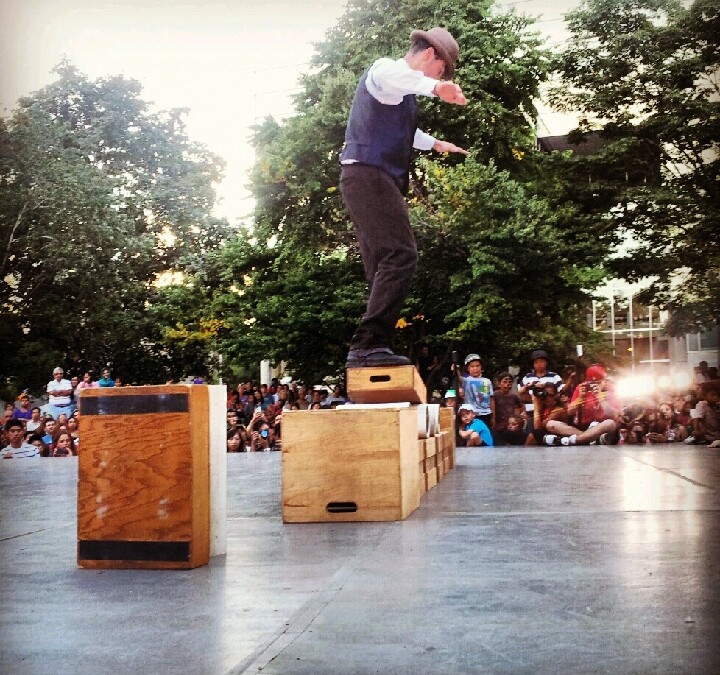
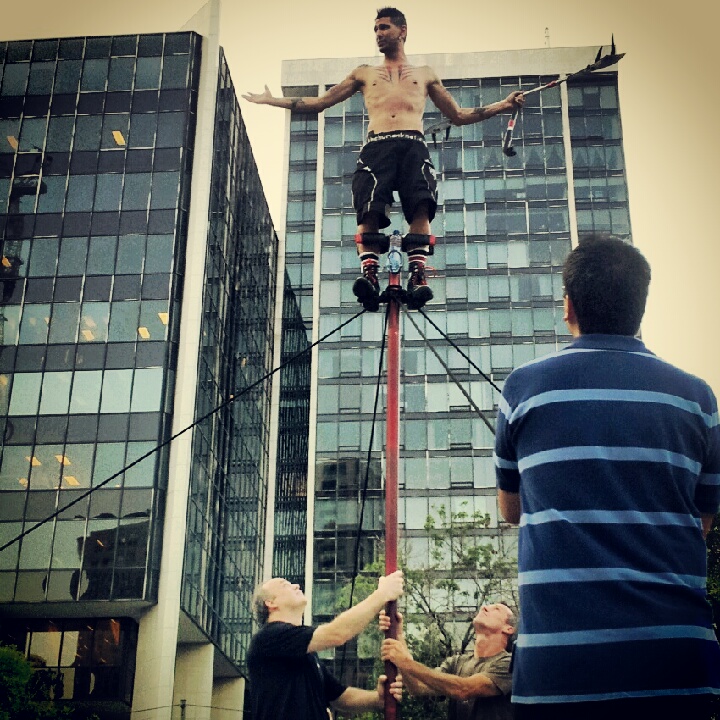
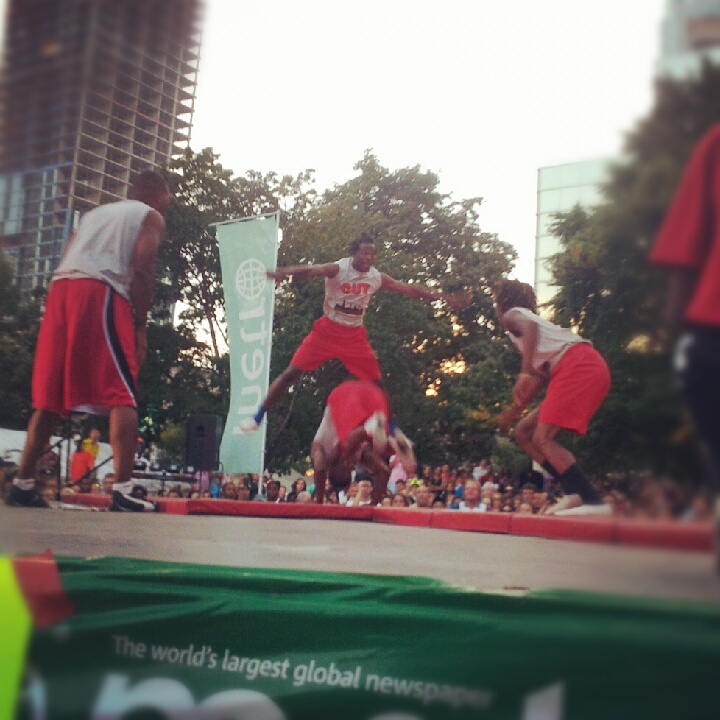
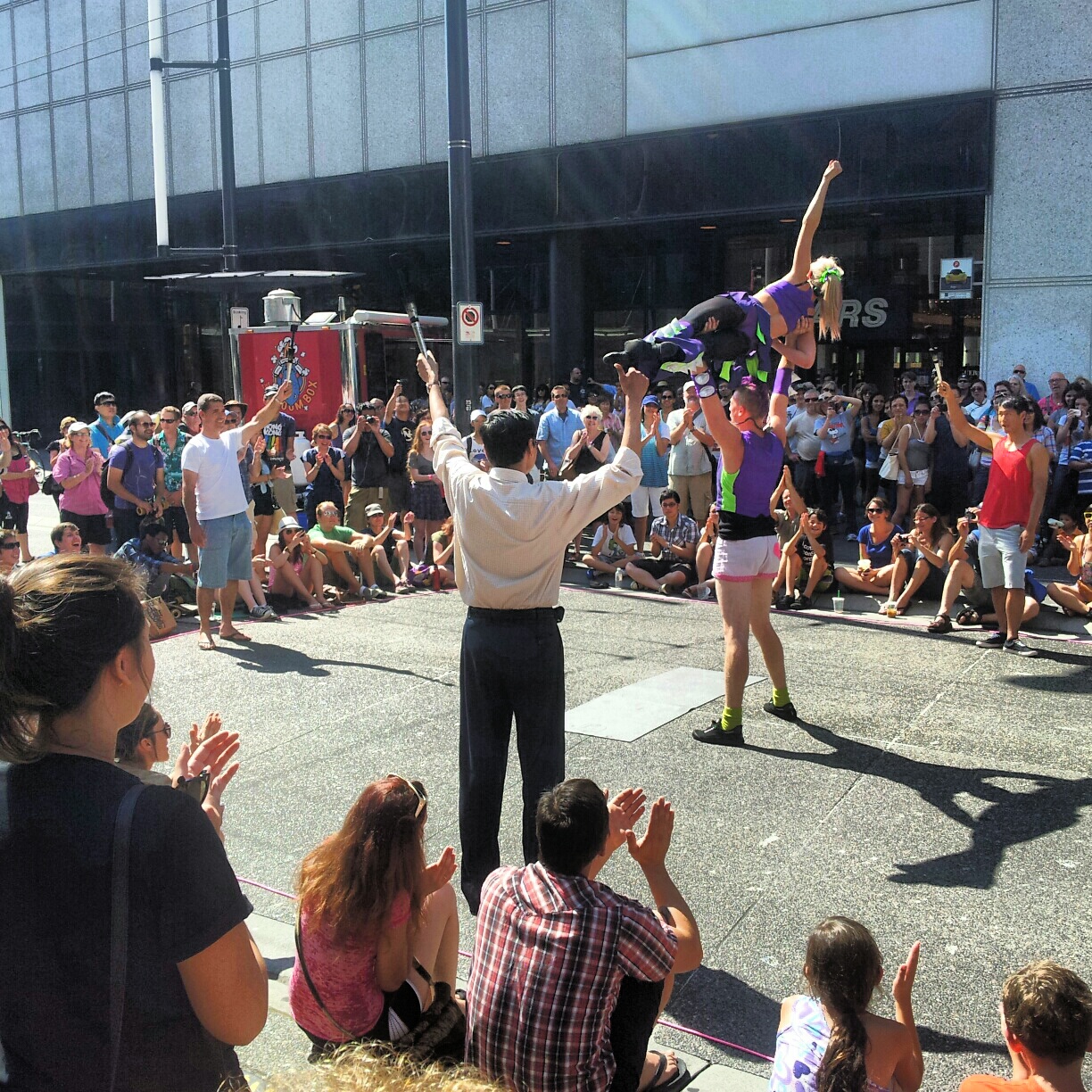
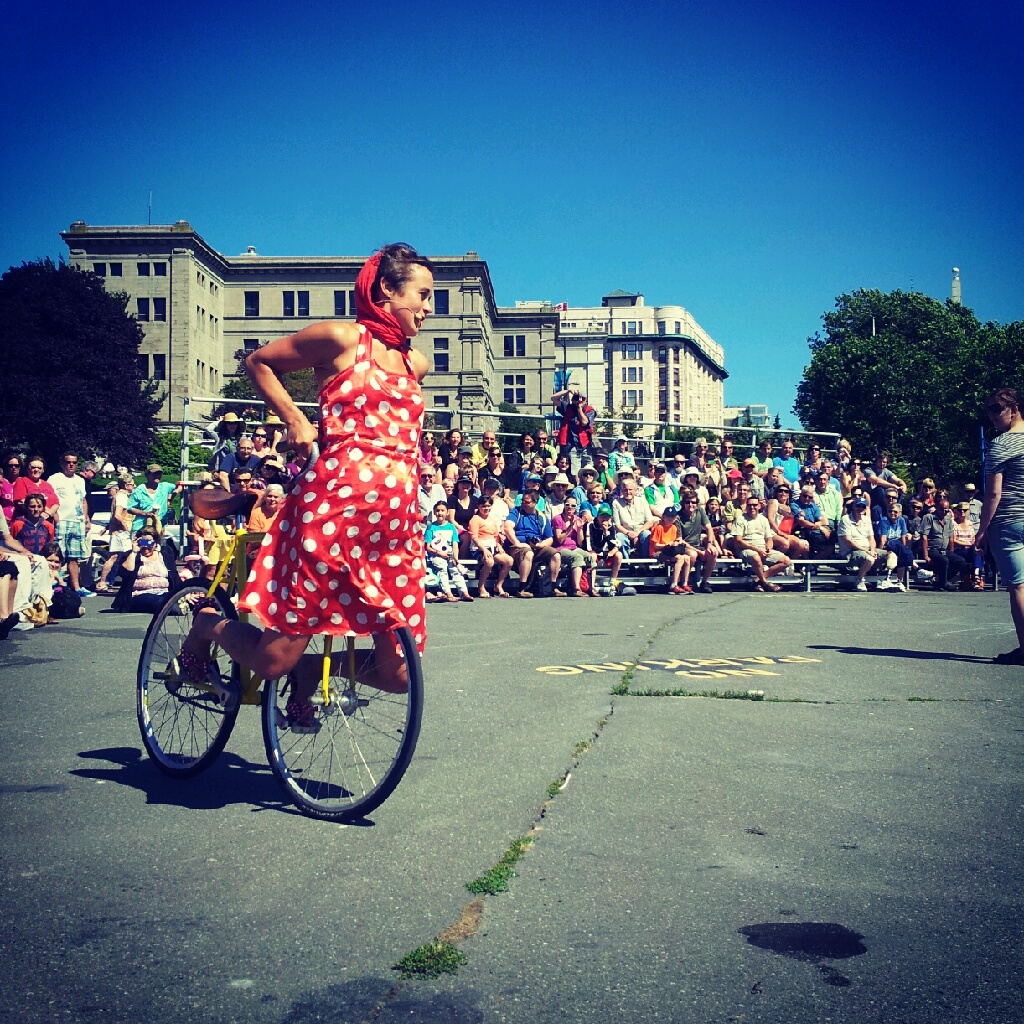
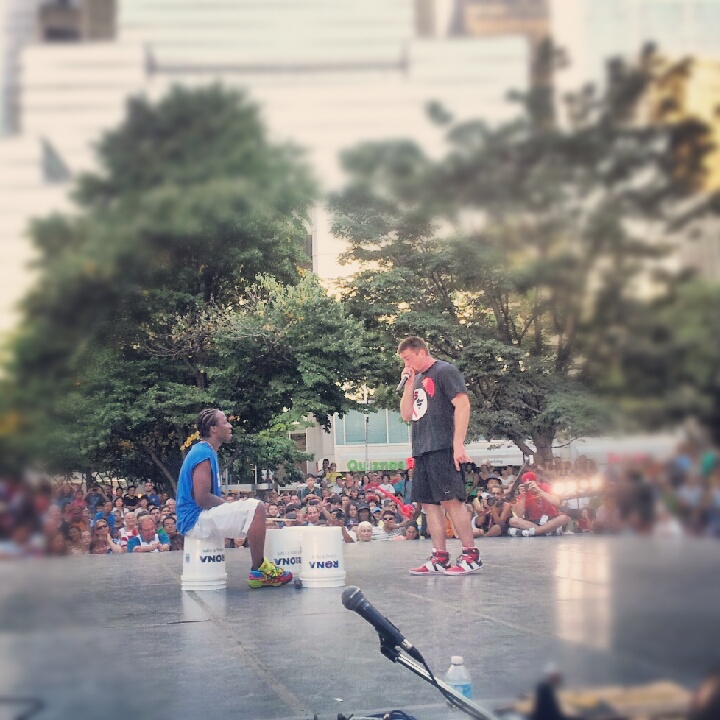
Recent Comments